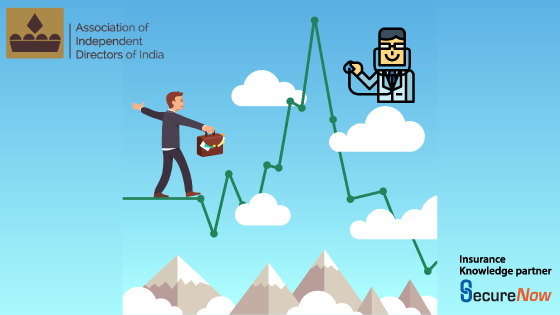Did you know that as per the insurance regulator, IRDA, the total insured business losses in India have grown by almost 100% in 4 years, from Rs 55,000 cr. in 2015 to over Rs 1,00,000 cr. in 2019? These losses have typically been caused due to the risks faced by businesses.
What’s important to note is that the business entities that suffered these losses had duly covered their risks with the appropriate insurance program. How did they do this? How can you, as a decision maker in your firm, be sure that you understand your risks and have your risk cover in place?
Before we answer these questions, here are some more facts to think about. Did you know that the No. 1 risk to businesses in 2020 is actually reckoned to be Cyber risk, followed by Business Interruption risk and risk from natural catastrophes? And among the other potential risks to your business are risks due to your workforce’s ill-health, from uncertainties in the operating conditions, and from any unexpected liabilities you might face, and so on.
What is a risk? In simple terms a risk is the chance or probability that an actual outcome will differ from an expected outcome. The term risk is most usually used in a financial sense, with regard to a particular investment, and it captures the probability of a variation between the expected return and the actual return on the investment.
In another context, risk is the possibility of danger, injury or occurrence of unwanted incidents. An example is the unwanted chance of an accident while driving in your city. Or say the unpleasant chance of political unrest during your vacation in Maldives (or any other destination). The term hazard is also often used in the context of risks, though when adequately defined, a hazard is something that can cause you any harm, e.g. the presence of chemicals in your environment, of dangerous equipment at your workplace, stress, etc. The probability that a hazard will cause you harm is actually the risk you face.
Why is it important to assess risks to your business? A proper assessment of your business risks will help you understand the areas of maximum vulnerability. You can then focus on reducing or managing these risks. While there would be preventive measures that you can take to reduce risks, buying insurance is a great way to mitigate your overall risks. A simple example will help to explain.
Let’s say you obtain the right license for your catering business when you start it up. That will help in reducing the risk of the business being shut down from lack of a license. However, despite this, there could be other reasons that your business might suffer from an adverse inspection report by the relevant authority. These might include an assessment of inadequate hygiene or of a safety violation at your facility during inspection, leading to a complete shutdown of your business (even if for some time). Hence having the license, a great initial step, could not sufficiently mitigate the overall risk of business interruption for you.
For any size of corporate, and especially for MSMEs, there usually is heavy dependence on the overall judgement of a few key people – the decision makers – for assessing the business risks and taking risk mitigation decisions. Unfortunately, the knowledge levels or the information available to these key individuals often isn’t adequate to come to the correct conclusions to sufficiently manage their risks.
This is where a Risk Diagnostic tool comes in. Such a tool provides you with a holistic and quick overview of risks to your business from the get go. A good Risk Diagnostic tool is a personalised assessment to help a prospect self-assess their risks, depending upon the industry type, the number of employees and other details. The tool typically asks you to select your industry and guides you through the different type of risks involved in your business. A report can be automatically generated by the tool and sent to you electronically. For completeness the tool also provides you with the best quotes for the appropriate insurance products that can help to cover these risks for your situation. You could find a Risk Diagnostic tool to try out here.
It is important for businesses to not be complacent about their future but to be aware of possible risks they face, and to take active steps to manage and minimise these risks for their survival and prosperity.

